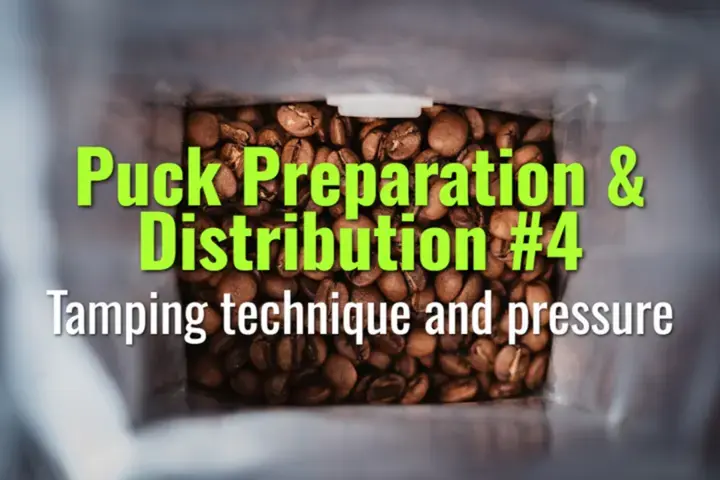Tamping technique and pressure
How proper tamping technique and consistent pressure contribute to puck integrity, flow resistance, and espresso quality.
- Coffee Basics Nerds
- 2 min read
Article 4 of 12 in Puck Preparation & Distribution/

Why Tamping Matters
- Tamping compresses the ground coffee to create even resistance to water.
- Uneven or inconsistent tamping causes channeling and unbalanced extraction.
Technique Basics
- Levelness:
- Tamper must be perfectly level to avoid tilted pucks.
- A slight angle can create thinner zones where water rushes through.
- Pressure:
- Standard guidance: ~30 pounds of force, but consistency is more important than exact weight.
- Once the puck is fully compressed, additional force yields little benefit.
- Grip and Body Position:
- Hold tamper like a door handle, wrist straight, elbow at 90°.
- Apply pressure from shoulder to maintain stability.
Types of Tampers
- Standard Flat Tamper: Manual control, requires skill.
- Calibrated Tamper: Clicks or stops at set pressure (~30 lbs), ensuring repeatability.
- Palm/Leveling Tampers: Rely on flat contact surface to guarantee level tamping.
- Automatic Tampers (e.g., Puqpress): Provide consistent, ergonomic tamping in high-volume cafés.
Common Mistakes
- Over-tamping: unnecessary; creates fatigue but doesn’t improve extraction.
- Uneven tamp: leads to visible blonding and channeling.
- Not cleaning basket rim: leftover grounds prevent a proper seal, causing leaks.
Practical Tips
- Focus on level tamping before worrying about exact pressure.
- Use consistent motion and pressure across shots.
- Keep tamper and basket dry to prevent sticking.
- Consider calibrated or automatic tampers for consistency in multi-barista environments.
Summary
Effective tamping is about level, consistent compression rather than brute force. Whether manual or assisted, good tamping ensures even resistance in the puck, reducing channeling and supporting balanced, repeatable espresso extractions.